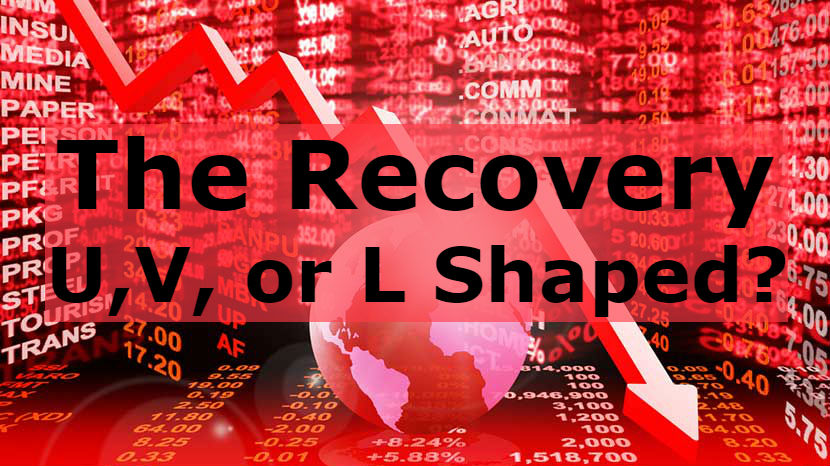The critical pieces of information that financial market participants require to end ongoing bouts of volatility and selling pressures are:
- An effective containment of the pandemic in most, if not all, major economies, but certainly including the US;
- A credible demonstration that governments are undertaking sufficient steps to spur demand via fiscal policy, to underpin the ‘plumbing’ of the financial system via central bank action and to backstop credit risk using government guarantees;
- Confidence that asset prices properly discount the likely impairments to earnings (equities), to financial disintermediation (credit spreads) and to growth (yield curves). In that regard, the critical question regards the length of the downturn. Will it be ‘V’, ‘U’ or ‘L’-shaped? Duration matters more than depth.
Containing the pandemic
While China appears to have contained new rates of infection (flattened the curve to near-zero new cases), doubts will persist whether China’s political, social and institutional advantages in pandemic containment can be replicated in western liberal democracies (to say nothing of ‘failed states’). Italy, South Korea, Hong Kong and Singapore, perhaps, offer hope that pandemic curves can be flattened elsewhere, whereas the US, Germany, France, Spain, Switzerland, the UK and Japan are much more worrisome.
The bottom line is that the pandemic control evidence is not yet sufficient to allow the investors to take comfort from the successes of China alone.
Economic policy response
Fiscal policy is moving in the right direction in the US. Yet it is still not sufficient to impress unsettled markets. In Western Europe measures are also being adopted, but they are similarly too small. The bottom line is that fiscal policy has not yet arrived in sufficient ‘bazooka size’ for investors to discount a cyclical recovery into asset prices.
Monetary policy has moved rapidly and has offered open-ended commitments—to its very legal limits—to support growth and the functioning of financial markets. The bottom line is that central banks are doing all they can, but unfortunately neither global supply-chain disruptions nor demand shortfalls can be solved by monetary policy.
Credit risk has been acknowledged by most governments. In contrast to the worst moments of 2008, pre-emptive bailouts are politically acceptable today. The US will backstop airlines and other specific businesses. The Fed has funded a US Treasury special purpose vehicle to support credit markets. European governments have approved loan guarantees via banks. The ECB will purchase corporate credit, in massive size if required.
The remaining unknown, however, is whether investment grade and high yield credit markets might nevertheless freeze up. Might large-scale investor redemptions force credit mutual funds, active or passive, to ‘gate’ (i.e., delay) withdrawals? How might those potential disruptions hinder the ability of companies to roll over or issue new debt? Might it take a redemption crisis to force yet another policy response?
The bottom line is that support for credit markets is well advanced, but fundamental risks nevertheless remain an obstacle to the full restoration of investor confidence.
How long a recession?
The shape of the recession and the timing of recovery are the final critical factors for investors: Will it be a ‘V’-, a ‘U’- or an ‘L’-shaped recovery?
A ‘V-shaped recovery’ requires ‘China-like’ pandemic curve flattening in advanced economies, confidence that fiscal policy will be large enough to offset private sector spending shortfalls, and the absence of any ‘known-unknown’ disruptions (for example, a seizing-up of credit markets).
Clearly, a sustainable drop in infection rates is a necessary condition for restoring confidence. Yet even if new infection rates peak—which would probably be seen as a key inflection point by investors—the unanswered question is what happens when governments begin to loosen ‘social distancing’ restrictions as they attempt to normalize economic activity? To date, only small fractions of populations have been infected worldwide. That’s true even in China, Iran or Italy, three of the hardest-hit countries. If restrictions are lifted too quickly, the pandemic could return. Many epidemiologists believe a more gradual public health response will be necessary, which suggests more of a ‘U’ shaped normalization of economic activity, not a ‘V’.
In conclusion, the preconditions for a ‘V’-shaped recovery of economies and markets have not been met—not in terms of pandemic control, nor in the realms of fiscal, monetary or financial policy. Unsettled, nervous and at times even chaotic market conditions are likely to endure for longer.
